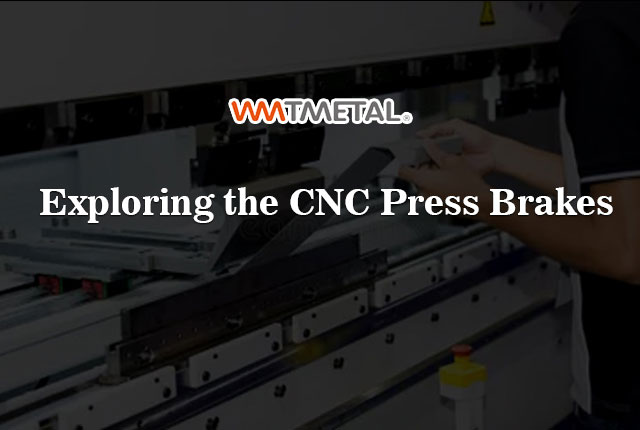WMT CNC Industrial Co., Ltd | All Rights Reserved.Design & Developed by VW Themes

CNC press brakes, also known as computer numerical control press brakes, are an integral part of modern manufacturing processes. These advanced machines play a crucial role in metalworking industries by bending sheet metal into desired shapes with precision and efficiency. In this article, we will delve into the technology behind brake press machines, their applications, advantages, and the impact they have had on the manufacturing sector.
CNC press brakes are a sophisticated evolution of traditional press brakes that rely on computerized controls for precision bending of sheet metal. The key components of a CNC press brake include a hydraulic system, a bending tool (punch), and a backgauge, all of which are controlled by a computer. The operator inputs the desired specifications and dimensions, and the CNC system carries out the bending process automatically, ensuring high accuracy and repeatability.
CNC press brakes find widespread applications in various industries, including automotive, aerospace, electronics, construction, and more. These machines are adept at forming complex shapes and angles, making them indispensable for producing components such as brackets, panels, frames, and enclosures. Their ability to work with different types of sheet metals, such as aluminum, steel, and stainless steel, makes them versatile and adaptable to diverse manufacturing needs.
1 Precision and Accuracy: One of the primary advantages of CNC press brakes is their ability to achieve precise bends consistently. The computer-controlled process eliminates human errors, ensuring uniformity across multiple production runs.
2 Increased Productivity: pressing brakes significantly enhance productivity due to their automated nature. They can perform complex bending operations swiftly, reducing production time and increasing output.
3 Cost-Efficiency: While CNC press brakes represent a considerable initial investment, they prove cost-efficient in the long run. Reduced material waste, lower setup times, and minimal rework contribute to overall cost savings.
4 Flexibility: CNC pressing brakes can be easily reprogrammed to handle different bending tasks. Allowing manufacturers to adapt quickly to changing production requirements.
The introduction of CNC pressing brakes has revolutionized the manufacturing sector. With their ability to automate and streamline the bending process, companies can achieve higher productivity levels and maintain consistent product quality. This technology has also opened doors for innovation, as designers and engineers can explore more intricate and creative designs that were previously challenging to manufacture.
Additionally, brake press machines have played a significant role in reducing the reliance on manual labor, making the workplace safer and improving overall working conditions for employees. The integration of these machines into manufacturing processes has led to higher precision, faster turnaround times, and increased competitiveness in the global market.
CNC press brakes have emerged as a vital tool in modern manufacturing, enabling efficient and accurate bending of sheet metal. Their impact on the industry is evident through improved productivity, cost-efficiency, and the ability to create complex shapes with ease. As technology continues to advance, brake press machines will likely become even more versatile and indispensable, further shaping the future of manufacturing.